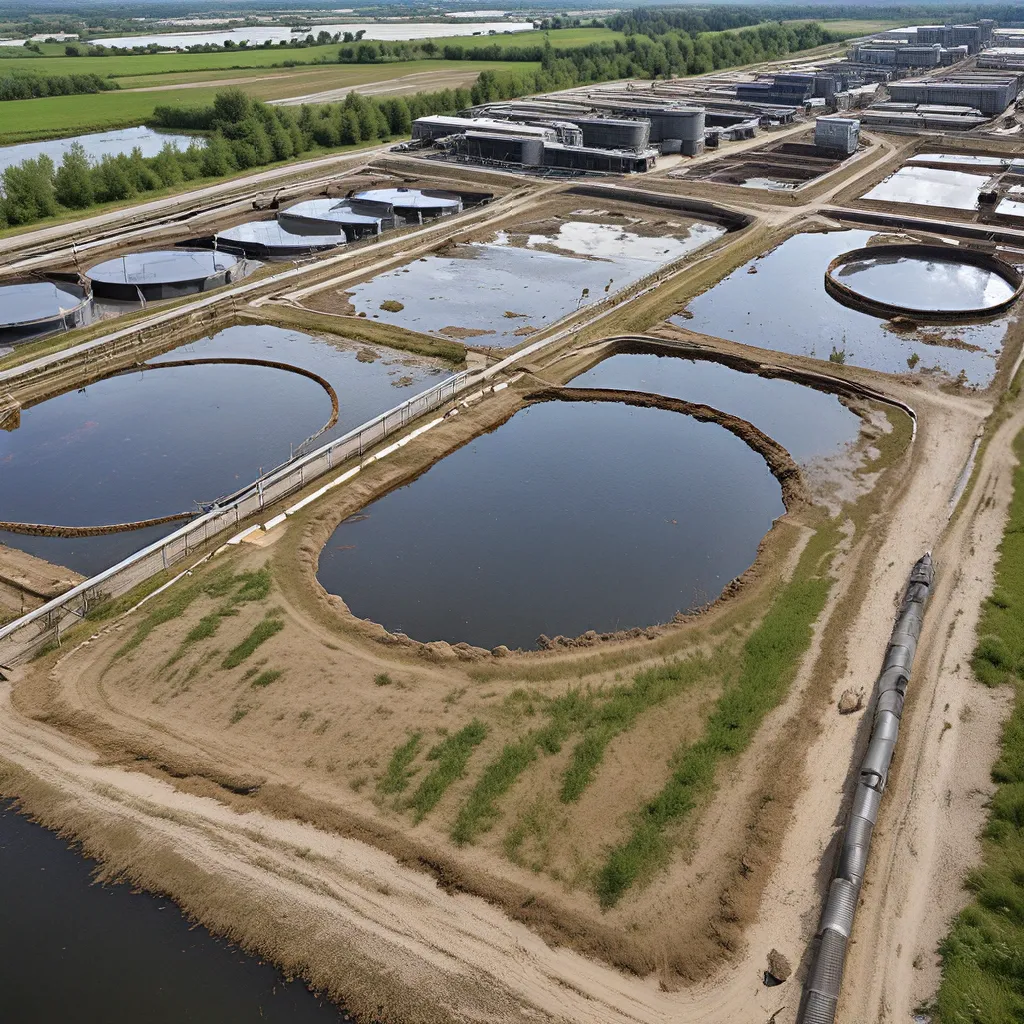
As an environmental enthusiast, I’ve always been fascinated by the incredible potential of waste. You know, there’s this common misconception that once something is considered “waste,” it’s worthless and destined for the landfill. But the truth is, our waste streams are a veritable goldmine of renewable energy, valuable chemicals, and sustainable materials. And the key to unlocking this treasure trove? Wastewater treatment.
Now, I know what you’re thinking – wastewater treatment? Sounds like a pretty dry and technical topic, right? But trust me, this field is anything but boring. In fact, it’s at the forefront of a revolutionary movement called the bioeconomy, where we’re harnessing the power of microbes and biological processes to transform our waste into a whole host of useful and sustainable products.
It all starts with understanding the incredible complexity of anaerobic microbiomes – the diverse communities of microorganisms that thrive in the absence of oxygen and play a crucial role in breaking down organic matter in our wastewater. These microscopic marvels are essentially nature’s own biochemical factories, capable of converting everything from agricultural waste to municipal sludge into bioenergy, biofuels, and even valuable platform chemicals that can be used to manufacture all sorts of biobased products.
The Microbial Metamorphosis: Unlocking the Secrets of Anaerobic Microbiomes
Now, I know what you’re thinking – how on earth do we harness the power of these microbial communities? Well, that’s where the cutting-edge research being done at places like the Microbiome Engineering Lab comes into play. These brilliant minds are using the latest advancements in systems and synthetic biology, high-resolution mass spectrometry, and genome editing to essentially reverse-engineer the inner workings of these anaerobic microbiomes.
By studying the intricate metabolic and regulatory networks that drive these microbial communities, they’re unlocking the secrets to optimizing their performance and directing them towards the production of specific bioproducts that we can actually use. It’s like they’re playing a high-stakes game of microbial Tetris, carefully arranging the right mix of microbes to create the perfect balance of energy, chemicals, and materials from our waste streams.
But it’s not just about the microbes – it’s also about the process engineering side of things. These researchers are developing high-throughput methods that integrate automation, synthetic biology, and machine learning to create engineered microbiomes that can recover a wide range of valuable bioproducts at commercially viable levels of titer, rate, and yield.
Mastering the Metabolic Maze: Deciphering the Interwoven Networks of Anaerobic Microbiomes
Of course, it’s not as simple as just throwing some microbes into a bioreactor and watching the magic happen. Anaerobic microbiome metabolism is a complex and intricate dance, with interwoven metabolic networks that can be maddeningly difficult to predict and control.
That’s why the researchers at the Microbiome Engineering Lab are taking a systems-level approach to understanding the metabolic regulation of these microbial communities. They’re using cutting-edge metabolomic and metaproteomic techniques, along with isotope tracing and quantitative metabolic modeling, to unravel the secrets of how these microbes transform our waste into valuable products.
By quantifying the metabolic fluxes and regulatory mechanisms at play, they’re able to optimize the process conditions and feeding strategies to maximize the production of the bioproducts we’re after. It’s like a high-stakes game of chemical chess, with the researchers constantly adjusting the pieces (i.e., the microbes and their environment) to achieve the desired outcome.
And the best part? This research isn’t just happening in a lab – it’s being translated into real-world wastewater treatment and solid waste management technologies that are building a circular bioeconomy. Imagine a future where our waste isn’t just something to be disposed of, but a renewable resource that can power our industries, fuel our vehicles, and even provide the raw materials for the biobased products we use every day.
Paving the Way for a Sustainable Future
Now, I know what you’re probably thinking – this all sounds great, but how realistic is it, really? Well, let me tell you, the progress being made in this field is nothing short of revolutionary. We’re talking about breakthroughs in our understanding of microbiome assembly and function, as well as the development of transformative technologies that are poised to change the game when it comes to wastewater treatment and solid waste management.
Sure, there are still plenty of challenges to overcome – the complexity of microbe-microbe interactions and the lack of precise tools to manipulate microbiome function, for example. But with the relentless efforts of researchers and innovators around the world, I have no doubt that we’ll continue to push the boundaries of what’s possible.
In fact, I’d argue that the future of the bioeconomy is inextricably linked to the advancements being made in wastewater treatment. As we unlock the potential of our waste streams, we’ll be able to reduce our dependence on fossil fuels, minimize our environmental impact, and create a more sustainable and circular economy that benefits us all.
So, the next time you flush the toilet or take out the trash, I want you to remember that your waste is a treasure trove waiting to be discovered. And with the help of brilliant minds and innovative technologies, we’re going to turn that trash into treasure that can power our world.
At Alpha Wastewater, we’re committed to being at the forefront of this bioeconomy revolution. With our cutting-edge wastewater treatment services, we’re helping our clients capitalize on the incredible potential of their waste streams and unlock the value of bioproducts that can transform their businesses and our planet. So, what are you waiting for? Let’s dive in and get started on building a more sustainable future, one flush at a time!